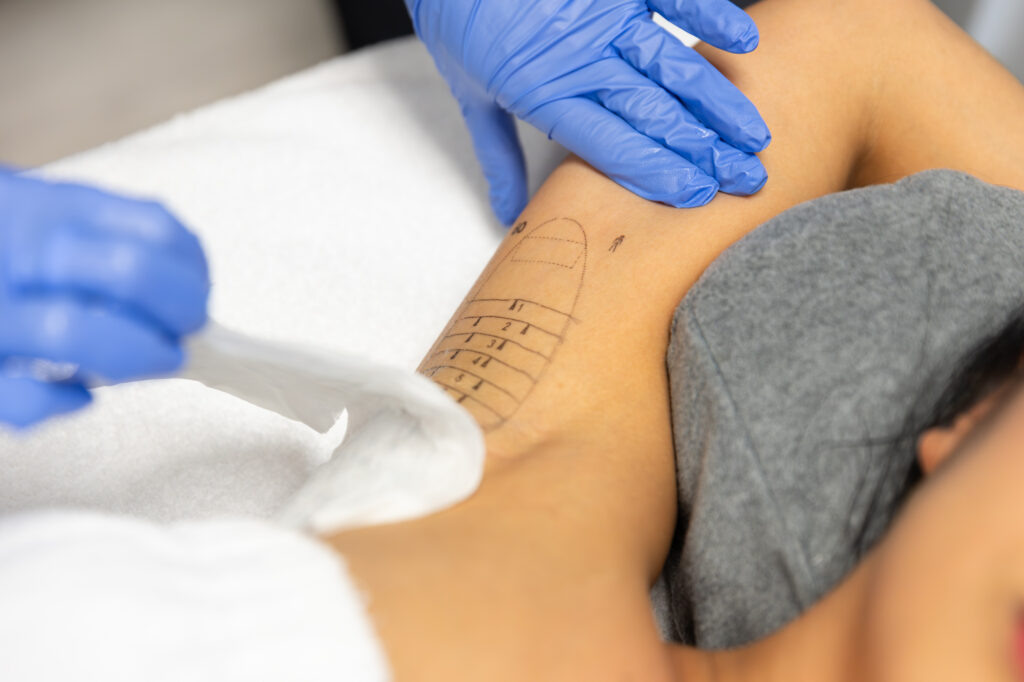Excessive sweating, known as hyperhidrosis, can significantly affect an individual's daily life and self-esteem. For those seeking effective treatment options, Miradry has emerged as a promising solution. This article compares Miradry Treatment in Dubai with other common treatments for hyperhidrosis, highlighting the pros and cons of each method to help individuals make informed decisions.
AN OVERVIEW OF HYPERHIDROSIS TREATMENTS
Numerous treatment options are available for hyperhidrosis, each with varying degrees of effectiveness and invasiveness. The primary treatments include:
- Antiperspirants: Over-the-counter and prescription-strength antiperspirants are often the first line of defense against excessive sweating. These products contain aluminum chloride, which temporarily blocks sweat glands.
- Botox Injections: Botulinum toxin injections can effectively reduce sweating by blocking the nerve signals responsible for activating sweat glands. The effects typically last several months, necessitating repeat treatments.
- Iontophoresis: This method involves using a device that passes a mild electrical current through water and into the skin's surface, temporarily shutting down sweat glands. It is commonly used for hands and feet.
- Medications: Oral medications, such as anticholinergics, can reduce sweating by blocking the chemical signals that trigger sweat production. However, they may have side effects, including dry mouth and blurred vision.
- Surgery: In severe cases, surgical options like sympathectomy may be considered. This invasive procedure involves cutting nerves that trigger sweating but carries risks of complications and is generally reserved for the most severe cases.
- Miradry Treatment: This innovative procedure uses microwave energy to permanently destroy sweat glands in the underarm area, providing long-lasting results.
COMPARISON OF MIRADRY AND OTHER TREATMENTS
1. Efficacy
Miradry is known for its high efficacy, with studies showing that patients often achieve an over 80% reduction in underarm sweating. In contrast, other treatments like Botox provide temporary relief, requiring repeat sessions every three to six months. Antiperspirants may help some individuals, but their effectiveness can vary widely.
2. Longevity of Results
One of the significant advantages of Miradry is its long-lasting results. Once the sweat glands are destroyed, they do not regenerate, providing a permanent solution for excessive sweating. In contrast, Botox, medications, and antiperspirants require ongoing use and repeat treatments, making them less convenient in the long run.
3. Invasiveness
Miradry is a minimally invasive procedure performed in a clinical setting. It requires local anesthesia but does not involve significant surgical intervention. In contrast, surgical options like sympathectomy are highly invasive, carry greater risks, and involve longer recovery times. Botox injections and iontophoresis are less invasive but still require repeated sessions.
4. Side Effects
Miradry typically has mild side effects, such as swelling and tenderness in the treated area, which resolve within a few days. Botox may cause temporary bruising and localized muscle weakness, while oral medications can have more systemic side effects. Surgical options can lead to complications, such as infection and nerve damage.
5. Recovery Time
After Miradry treatment, most patients can resume their daily activities within a couple of days, although they are advised to avoid strenuous exercise for a short period. Other treatments, such as Botox, allow for immediate return to normal activities, while surgery may require weeks of recovery.
WHO SHOULD CONSIDER MIRADRY?
Miradry is particularly suited for individuals with primary axillary hyperhidrosis who seek a long-term solution and have not found adequate relief from other treatments. Those who prefer a minimally invasive procedure with long-lasting results may find Miradry to be an appealing option.
PATIENT TESTIMONIALS AND EXPERIENCES
Many patients who have undergone Miradry treatment report life-changing results, describing increased confidence and freedom from excessive sweating. Testimonials often highlight the convenience of not needing to carry around antiperspirants or schedule frequent Botox appointments.
CONCLUSION
Miradry treatment presents a viable option for those struggling with hyperhidrosis, offering a unique blend of efficacy, minimal invasiveness, and long-lasting results. By comparing Miradry with other available treatments, individuals can better understand their choices and select the option that best suits their needs. Consulting a qualified healthcare provider is essential to explore the most effective treatment plan for managing hyperhidrosis.





Comments